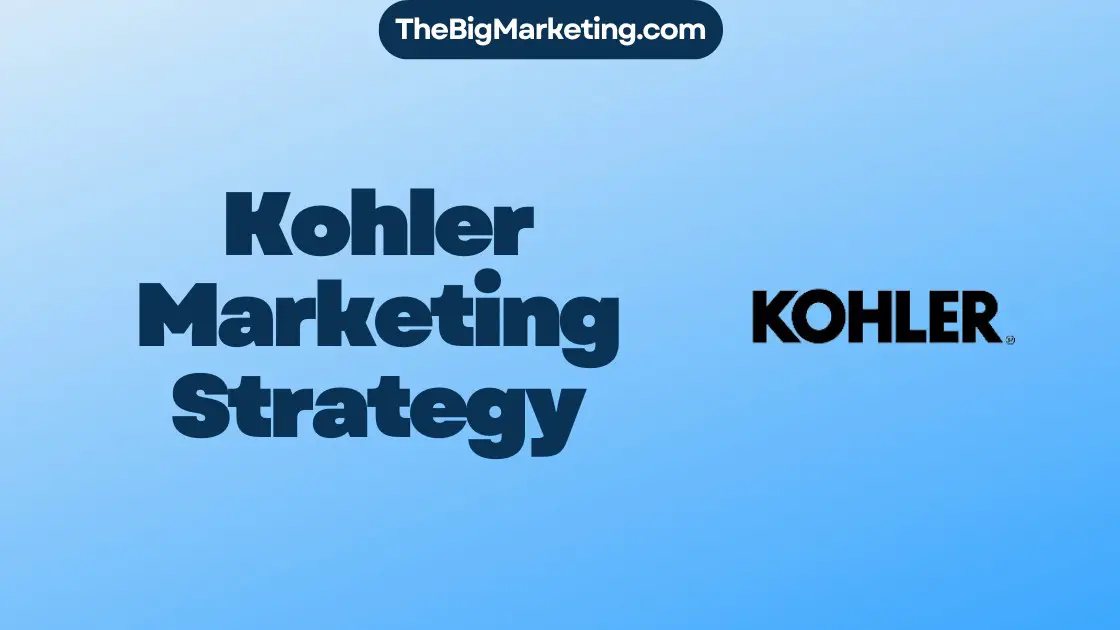Partnership marketing is an effective go-to-market strategy that brings two companies together to enhance their chances of reaching and converting ideal customers. By collaborating, these companies can execute targeted activities and campaigns to generate interest from mutual prospects. Partner marketers play a crucial role in this strategy, as they need to possess a deep understanding of their partners’ backgrounds, goals, resources, and the market they operate in.
Despite having limited resources, partner marketers excel in forming relationships across their organizations and rely on their own persuasion and connections to get the job done. Their ultimate goal is to achieve success even in economically challenging times, reaching a wider audience, and building trust among partners.
Partner marketing is a powerful tool that opens doors to new opportunities and helps brands thrive in the competitive landscape of 2024.
Key Takeaways:
- Partnership marketing is a go-to-market strategy where two companies collaborate to reach and convert ideal customers.
- Partner marketers need to have a deep understanding of their partners’ backgrounds, goals, resources, and the market.
- Despite limited resources, partner marketers form relationships and rely on their persuasion and connections to succeed.
- Partner marketing is crucial for reaching a wider audience, building trust, and achieving success in tough times.
- In 2024, partnership marketing offers new opportunities for growth and success.
The Importance of a Better-Together Story in Partner Marketing
To succeed in partner marketing, it is essential to have a solid better-together story. This involves understanding how your products and services work together and the value customers will get from engaging with your partnership. By crafting a compelling better-together story, you create a narrative that attracts and resonates with your target audience.
A better-together story highlights the joint use cases, customer testimonials, and ROI numbers that bring the partnership to life. It showcases the unique benefits and outcomes that customers can expect when they engage with your partnership. This narrative helps potential customers see the value and relevance of your collaboration, making them more likely to choose your products or services over alternatives.
When creating a better-together story, it’s important to consider various marketing activities, such as webinars and events. These platforms allow you to showcase your partnership and engage with a larger audience. By presenting a cohesive narrative that demonstrates the value of your collaboration, you can attract the attention of potential customers and build credibility in the market.
Furthermore, a compelling better-together story is vital for gaining the attention of large partners like Salesforce and AWS. These industry leaders have a vast audience, but limited resources for individual execution. By presenting a strong narrative that demonstrates the value of your partnership, you increase the likelihood of collaboration with these influential partners, which can significantly expand your reach and visibility.
An effective way to enhance your better-together story is through partner marketing campaigns. These campaigns should be designed to highlight the unique benefits and outcomes that your partnership offers. By showcasing joint success stories, customer testimonials, and quantifiable results, you can demonstrate the value your partnership brings to customers and generate interest in your offerings.
| Benefits of a Compelling Better-Together Story |
|---|
| 1. Increased customer engagement and conversions |
| 2. Enhanced credibility and trust in the market |
| 3. Attraction of influential partners |
| 4. Expansion of reach and visibility |
| 5. Improved chances of successful partner marketing campaigns |
Finding and Keeping the Right Marketing Partner
When it comes to strategic marketing partnerships, finding the right partner is crucial for success. The process of selecting a partner involves careful consideration of various factors to ensure compatibility and mutual benefits.
Defining Your Target Audience
The first step in finding the right marketing partner is to define your target audience. This includes understanding their demographics, preferences, and pain points. By having a clear picture of your target audience, you can identify partners who share a similar audience but offer complementary products or services.
Identifying Complementary Partners
When searching for a marketing partner, it is important to avoid direct competition with your own products or services. Instead, focus on identifying partners who offer complementary products or operate in parallel clusters. This approach minimizes potential conflicts and allows for a more harmonious collaboration.
The Partner Selection Process
The partner selection process involves researching brands that you admire, utilizing search engines and social media platforms, joining affiliate marketing networks, and participating in networking events. These activities can help you create a candidate list of potential partners.
When evaluating potential partners, consider factors such as audience overlap, brand reputation, product competition, alignment with values and goals, and outreach strength. A thorough assessment of these factors will help you narrow down your list and identify the most suitable partners for your marketing activities.
Building Strong Relationships
Once you have found the right strategic marketing partner, it is essential to build strong relationships based on mutual trust and understanding. Set clear expectations, communicate regularly, and be transparent about what is working and what needs improvement.
Provide support and access to shared resources to enable your partner’s success. Keep your partners updated about any changes or developments and reward them according to your agreement. By fostering strong connections and relationships, you can create a solid foundation for a successful marketing partnership.
Overall, finding and keeping the right marketing partner requires careful consideration, research, and relationship-building. By selecting a partner who aligns with your target audience and shares your values, you can create a powerful partnership that drives mutual success.
Establishing a Successful Marketing Partnership
When it comes to building a successful marketing partnership, finding the right partner who aligns with your goals and strategy is paramount. By establishing a shared vision, dividing responsibilities, and creating an agreement, you can set a solid foundation for collaboration.
One essential aspect of establishing a successful marketing partnership is providing your partners with the right messaging, sales pitch, and resources through partner enablement. This could include comprehensive product training, marketing collateral, and ongoing support to ensure that your partners are equipped to effectively promote your offerings.
Consider utilizing interactive product demos as part of your partner enablement strategy. These demos can serve as powerful tools for onboarding partners quickly and effectively, allowing them to familiarize themselves with your solutions and effectively communicate their value to potential customers.
Another approach to enhance partner enablement is to create “campaigns in a box” – pre-packaged campaigns or events that partners can choose from. By providing them with ready-to-use marketing materials, templates, and assets, you can streamline their promotional efforts and accelerate time to market.
Allocating a significant budget to partner marketing is crucial for success. To determine the necessary budget, it is essential to align with channel sales and assess the expected outcomes and desired returns on investment (ROI). This collaborative approach ensures that both parties are aligned in terms of expectations and resource allocation.
By establishing a successful marketing partnership, you can tap into a broader audience, leverage the strengths of your partners, and achieve mutually beneficial goals. Investing in partner enablement and aligning on key strategies will set the stage for a fruitful and enduring collaboration.
| Key Steps to Establishing a Successful Marketing Partnership |
|---|
| Find a partner who aligns with your goals and strategy |
| Establish a shared vision, divide responsibilities, and create an agreement |
| Provide partners with the right messaging, sales pitch, and resources through partner enablement |
| Consider using interactive product demos to onboard partners quickly and effectively |
| Create “campaigns in a box” to offer pre-packaged campaigns or events |
| Allocate a significant budget to partner marketing and align with channel sales |
The Power of Small to Mid-Sized Partners in Marketing
When it comes to partnership marketing, small and mid-sized partners can play a crucial role in driving success and contributing significantly to your overall revenue. These partners often have a unique hunger for leads, making them more willing to meet halfway and invest their resources in joint marketing efforts.
Recognizing the potential of small partners can lead to long-term success and substantial revenue growth. By forming strategic relationships with these partners, you can tap into their audience and expand your reach to new customer segments. The key is to allocate resources and provide the necessary support to help these partners succeed in their marketing efforts.
Building strong relationships with small partners comes with several benefits. Unlike larger partners, they are more likely to provide personalized attention and focus on creating a mutually beneficial partnership. This level of commitment and collaboration can lead to innovative marketing campaigns and creative joint ventures that resonate with your target audience.
But how can you effectively collaborate with small partners? Here are some strategies to consider:
- Develop a shared vision: Align your goals and objectives to create a strong foundation for collaboration.
- Communicate openly: Regularly share insights, performance data, and market trends to foster transparency and build trust.
- Provide marketing resources: Offer marketing collateral, promotional materials, and training to help small partners effectively promote your products or services.
- Offer incentives: Create incentive programs to motivate and reward small partners for their contributions to joint marketing efforts.
Case Study: Success with Small Partners
To illustrate the power of small to mid-sized partners in marketing, let’s look at a case study featuring “ABC Software Solutions” and “XYZ Digital Marketing Agency.” ABC Software Solutions recognized the potential of small partners in expanding their market reach and revenue.
They formed a partnership with XYZ Digital Marketing Agency, a growing agency specializing in B2B lead generation. The collaboration aimed to leverage XYZ’s expertise in digital marketing to generate qualified leads for ABC’s software solutions.
Together, they developed a joint marketing campaign that included targeted email marketing, social media promotions, and a webinar series highlighting the benefits of ABC’s software solutions for XYZ’s core audience.
The partnership proved to be a tremendous success, generating a significant increase in lead generation and conversion rates for ABC Software Solutions. The strategic collaboration with a small partner like XYZ Digital Marketing Agency allowed ABC to tap into a new market segment and achieve marketing success that exceeded their initial expectations.
| Benefits of Partnering with Small to Mid-Sized Partners |
|---|
| 1. Increased market reach and access to new customer segments |
| 2. Personalized attention and a stronger commitment to collaboration |
| 3. Innovation and creative marketing campaigns |
| 4. Potential for substantial revenue growth |
| 5. Opportunity to build long-term strategic relationships |
In conclusion, small and mid-sized partners can bring immense value to your partnership marketing strategy. Recognize their potential, nurture the relationship, and provide the support and resources necessary for their success. Together, you can achieve marketing success that surpasses expectations and drives substantial revenue growth.
Partnership Marketing Opportunities in 2024
Partnership marketing in 2024 presents various opportunities for brands. Highlights from a report by Acceleration Partners include a 14% net revenue surge driven by elevated average order value (AOV) and strategic maneuvers.
The rise of mobile shopping, especially among Gen Z, provides opportunities for mobile commerce strategies. With the increasing reliance on smartphones for shopping, brands can leverage mobile technologies to create personalized experiences that resonate with their target audience.
Cost efficiency tactics can help brands save millions of dollars in commissions and turn challenges into opportunities. By optimizing processes and implementing efficient strategies, brands can maximize ROI and minimize costs associated with partnership marketing campaigns.
Unconventional partnerships, such as those involving Connected TV and TikTok, can diversify affiliate marketing efforts. Brands can explore these emerging platforms and tap into their immense user base to amplify their reach and engage with new audiences.
Navigating uncertainties requires a focus on post-purchase metrics and reliance on proven partnerships. Brands should analyze customer data, identify trends, and adapt their strategies based on customer behavior and preferences to drive repeat purchases and foster long-term loyalty.
Brands have also found success with nano- and micro-influencers, leveraging personalized strategies for engagement and revenue. These influencers have smaller but highly engaged audiences, allowing brands to connect with niche markets and drive targeted results.
In summary, the future of partnership marketing in 2024 promises significant opportunities for brands to expand their reach, enhance customer experiences, and drive revenue growth. By capitalizing on mobile commerce, exploring unconventional partnerships, optimizing cost efficiency, and leveraging the power of influencers, brands can position themselves for success in the evolving marketing landscape.
Tips for Finding and Keeping a Strategic Marketing Partner
Finding and keeping the right strategic marketing partner is essential for maximizing the success of your partnership marketing efforts. It requires a mutual understanding of objectives and a trusting relationship. Here are some tips to help you in your journey:
Define Your Target Audience
Before you start searching for a strategic marketing partner, clearly define your target audience. This will help you identify partners who share a similar audience but offer complementary products or services, avoiding direct competition. By aligning your target audiences, you can create a more cohesive and effective marketing strategy.
Identify Ideal Partners
Once you have defined your target audience, identify ideal partners who operate in parallel clusters and offer complementary products or services. These partners can provide additional value to your customers and expand your reach. Research brands that you admire, use search engines and social media platforms, join affiliate marketing networks, and participate in networking events to create a list of potential partners.
Thoroughly Research Potential Partners
When researching potential partners, consider factors such as audience overlap, brand reputation, product competition, alignment of values and goals, and outreach strength. Look for partners who have a similar target audience but offer distinct products or services that can enhance your offerings. Thoroughly evaluate their marketing strategies, customer base, and reputation to ensure compatibility and alignment.
Set Clear Expectations
Once you have selected a strategic marketing partner, it is crucial to set clear expectations from the start. Clearly communicate your goals, objectives, and desired outcomes. Establish a shared vision and divide responsibilities based on each partner’s strengths and resources. By setting clear expectations, you can align your efforts and work towards a common goal.
Regular Communication and Transparency
Regular communication is key to maintaining a strong partnership. Schedule regular meetings or check-ins to discuss progress, share insights, and address any challenges or concerns. Be transparent about what is working and what is not, and be open to feedback and suggestions. Building a culture of transparency and open communication fosters trust and collaboration.
Reward Partners in Line with Agreement
Partnerships should be mutually beneficial, so it is important to follow through on any agreed-upon rewards or incentives. Reward your strategic marketing partners in line with your agreement to show appreciation for their efforts and contributions. This can include financial incentives, joint marketing initiatives, or access to shared resources that can help partners achieve their goals.
Build Strong Connections and Relationships
Building strong connections and relationships with your strategic marketing partners is crucial for long-term success. Nurture these relationships by providing ongoing support, access to shared resources, and opportunities for collaboration and growth. Keep partners updated about any changes or developments that may impact the partnership, and seek their input and involvement in decision-making processes.
| Benefits of Finding and Keeping a Strategic Marketing Partner: |
|---|
| Enhanced reach and expanded audience |
| Complementary products or services |
| Shared resources and expertise |
| Mutually beneficial partnerships |
| Increase in brand awareness and visibility |
| Strengthened reputation and credibility |
By following these tips, you can increase your chances of finding and keeping the right strategic marketing partner. Remember that partnership marketing is a collaborative effort, and the success of the partnership relies on effective communication, trust, and alignment of goals and values.
The Benefits of Partnership Marketing
Partnership marketing offers numerous benefits for brands. By collaborating with partners, brands can extend their reach, tap into new audiences, and open new markets. It allows brands to pool resources, skills, and ideas to grow their reputation and achieve more effective results. Partnership marketing can help companies mitigate risks and increase their resilience in uncertain times. It also provides opportunities for cost efficiency and innovation. Additionally, partnerships can lead to increased brand awareness, lead generation, and sales. Overall, partnership marketing is a valuable strategy for brands looking to elevate their marketing efforts and achieve long-term success.
The Advantages of Partnering
Partnering with other companies can bring a range of advantages to your brand. Here are some key advantages of partnering:
- Expanded Reach: Partnering allows brands to access new customer segments, expanding their reach beyond their existing audience.
- Increase Brand Awareness: Collaborating with partners exposes your brand to their audience, increasing brand visibility and awareness.
- Shared Resources: By pooling resources with partners, brands can access additional skills, expertise, and resources, enabling them to execute more impactful marketing campaigns.
- Risk Mitigation: Partnering spreads the risks and costs associated with marketing activities, making it more manageable for each partner.
- Innovation: Partnering promotes collaboration and the sharing of ideas, fostering innovation and creativity.
- Increased Sales: Strategic partnerships can result in an increase in sales through cross-promotion, referrals, and joint marketing efforts.
Partnering enables brands to leverage the strengths of their partners and achieve mutual growth and success. By combining forces, brands can achieve greater results and unlock new opportunities in the market.
The Future of Partnership Marketing
As the partnership landscape evolves, the future of partnership marketing looks promising. Brands are expected to focus on building mutually beneficial relationships and leveraging technology for diversification.
Emerging trends include the use of artificial intelligence and data analytics to enhance partner selection and optimization. By harnessing the power of AI and data analytics, brands can identify the most compatible and high-performing partners, maximizing the effectiveness of their partnership marketing efforts.
Brands will also continue to explore new platforms and channels to reach their target audience. Voice search is gaining popularity, presenting an opportunity for brands to optimize their partnership marketing strategies for voice-enabled devices and platforms. Social media platforms like TikTok offer unique opportunities for brands to engage with younger audiences and tap into emerging trends.
Personalization, customer-centricity, and sustainability will be key drivers of success in future partnership marketing strategies. Brands will need to focus on tailoring their partnerships and marketing campaigns to meet the specific needs and preferences of their target audience. Customer-centric approaches will ensure that partnerships deliver value and resonate with consumers. Incorporating sustainable practices and responsible business initiatives into partnership marketing efforts will also be important as consumers increasingly prioritize eco-friendly and socially responsible brands.
In summary, the future of partnership marketing holds great potential. With a focus on building strong relationships, embracing technology, and aligning with evolving consumer preferences, brands can leverage partnership marketing to drive growth, reach new audiences, and achieve long-term success.
: Emerging Trends in Partnership Marketing
- Utilization of artificial intelligence and data analytics for partner selection and optimization.
- Exploration of new platforms and channels, such as voice search and TikTok.
- Emphasis on personalization, customer-centricity, and sustainability.
| Benefits of Future Partnership Marketing | Trends and Strategies | Impact on ROI |
|---|---|---|
| Expanded reach and access to new audiences | Utilizing AI for partner selection and optimization | Increase in conversions and sales |
| Enhanced brand reputation and credibility | Exploring emerging platforms like TikTok | Improved brand visibility and customer engagement |
| Cost-effective marketing approach through shared resources | Embracing voice search and optimization | Reduced marketing costs and increased efficiency |
| Opportunity for innovation and creative collaborations | Implementing personalized and customer-centric strategies | Higher customer satisfaction and loyalty |
| Long-term growth and sustainability | Incorporating eco-friendly and socially responsible initiatives | Positive brand image and increased market share |
Conclusion
Partnership marketing is an effective go-to-market strategy that enables brands to collaborate and expand their reach to a wider audience. By establishing strong relationships with partners, brands can increase brand awareness and drive revenue growth. The success of partnership marketing is dependent on several key factors, including crafting a compelling better-together story, selecting the right partners, setting clear expectations, and providing necessary support and resources for partner success.
As the marketing landscape continues to evolve, partnership marketing will remain a vital strategy for brands in 2024 and beyond. It allows brands to tap into new markets, pool resources, and achieve more effective results. By embracing partnership marketing, brands can navigate uncertainty, enhance their resilience, and take advantage of emerging opportunities. The future of partnership marketing lies in building strong, mutually beneficial relationships and leveraging technology for optimization and diversification.
In summary, partnership marketing is a powerful strategy for brands looking to elevate their marketing efforts. With the right approach and execution, partnership marketing can help brands extend their reach, increase brand awareness, and drive revenue growth. As brands adapt to the changing marketing landscape, partnership marketing will continue to be a driving force in achieving success.






